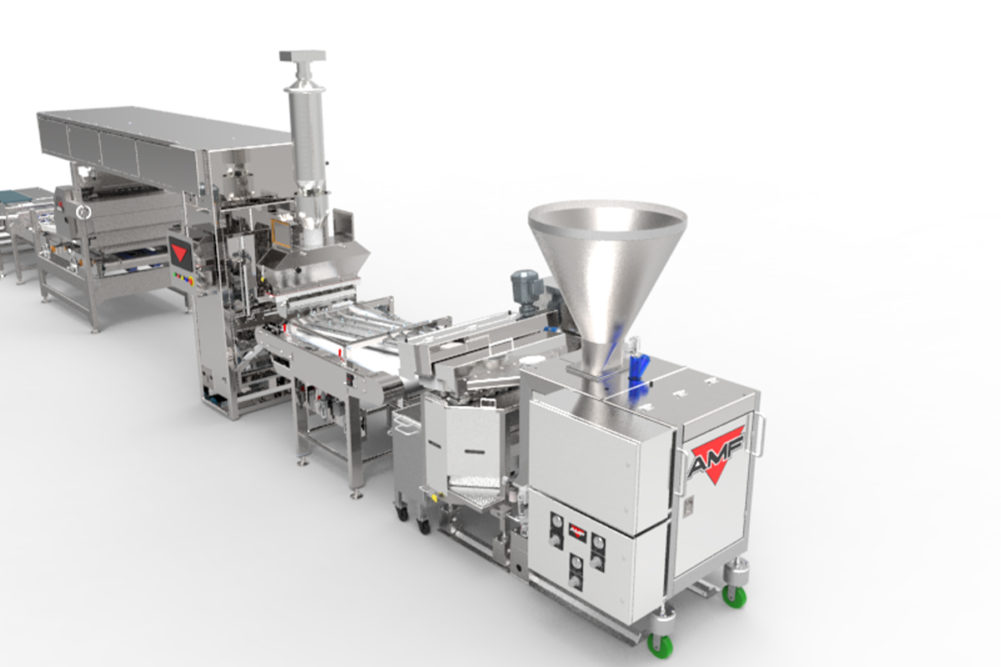Protecting product quality at the divider means reducing stress on the dough as it goes through the equipment. While this might not be as important for some products, reducing friction opens up the world of automation to more sensitive doughs.
“When the dough is stressed during dividing, the gluten structure will be damaged,” explained Patricia Kennedy, president, WP Bakery Group USA. “With servo technology, we are able to avoid this stress.”
With the data provided by the servo controller, WP Bakery Group can minimize pressure inside the divider, allowing delicate doughs to go through the process without losing finished product quality.
There are also ways to build that gentle processing into the divider.
For Middleby Bakery Group, oversizing double screws and divider pumps while also slowing down their rotations has reduced dough pressure and friction. This leads to less stress and heat and creates a more consistent dough. All of this is made possible by servo technology, controls and the company’s proprietary software.
“Servo technology provides the feedback to the operator and the original equipment manufacturer so we can monitor each lane,” said Jay Fernandez, master baker at Middleby Bakery Group’s Innovation Center. “For example, our ability to see the exact rotations needed to deliver the required dough weight, knowledge and control the specific density of the product. The math works out very well.”
The latest technology’s ability to provide accurate weights and reduced stress on the dough simultaneously can have some unforeseen results.
“Precision servo-driven sinusoidal pumps are delivering very accurate weights across multiple lanes with the added benefit of reduced pressure and stress on the doughs,” Mr. Fernandez said. “This may equate to cleaner labels due to a reduction in traditional dough conditioners.”
Monitoring and control of temperature can also have a direct impact on the dough integrity as well as yeast activity. And controlling these parameters from batch to batch ensures consistency throughout a day’s production runs.
“The ability to set, maintain and re-implement very precise parameters and call them up from the divider’s memory helps keep quality levels throughout shifts and across multiple shifts over time,” said Cesar Zelaya, bakery technology manager, Handtmann. “More than that, the ability to adjust for variables and apply optimized parameters across lines and plants helps maintain product consistency across the enterprise.”
This article is an excerpt from the December 2021 issue of Baking & Snack. To read the entire feature on Dividing, click here.






